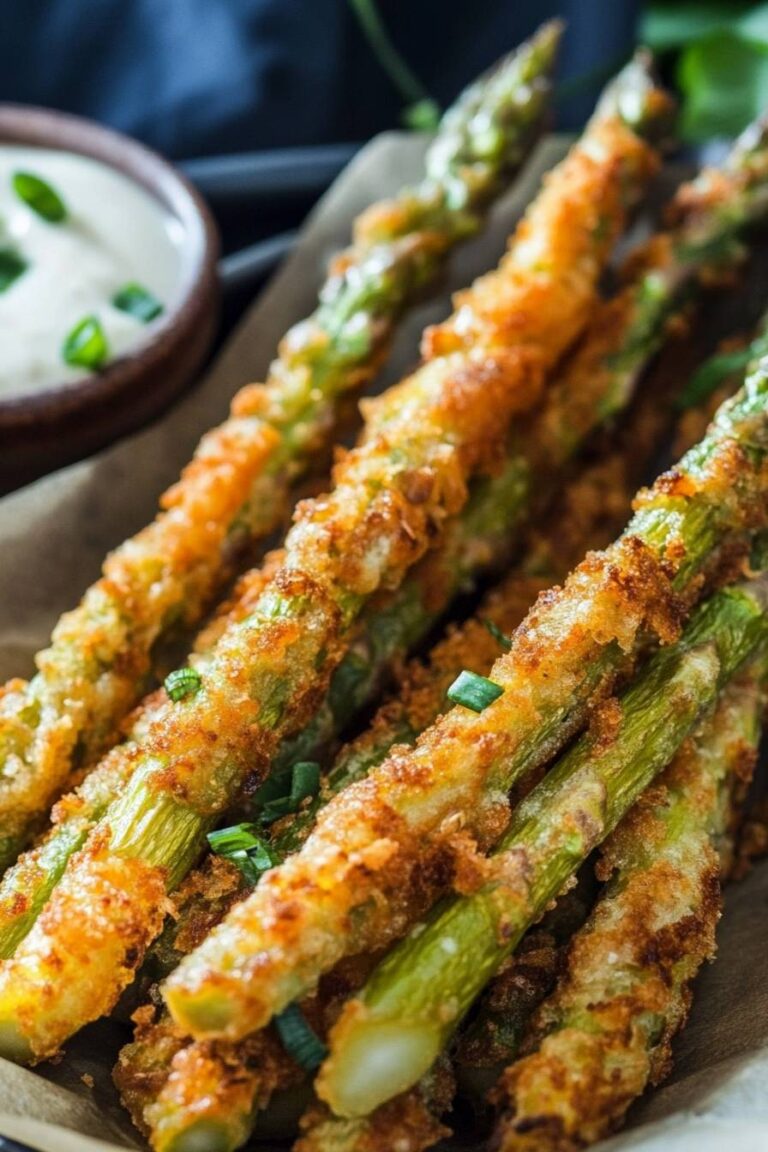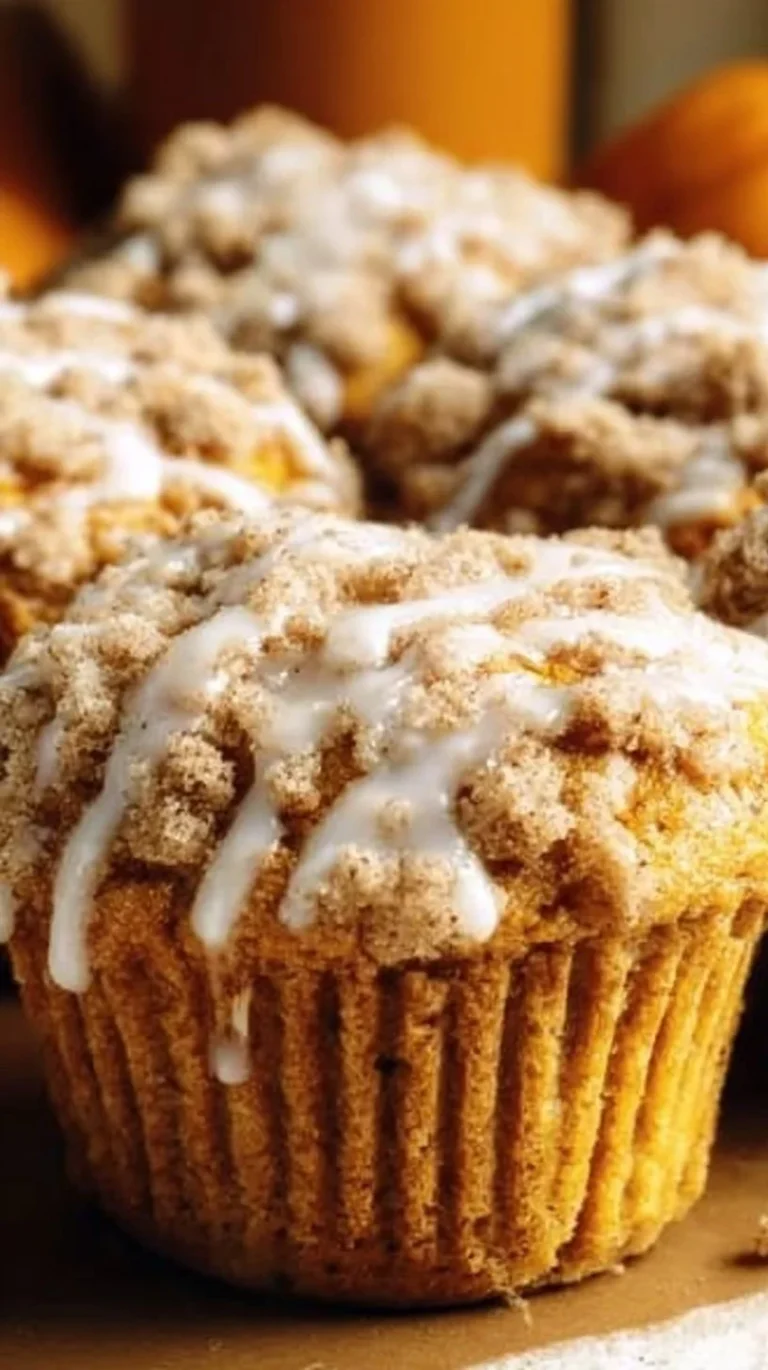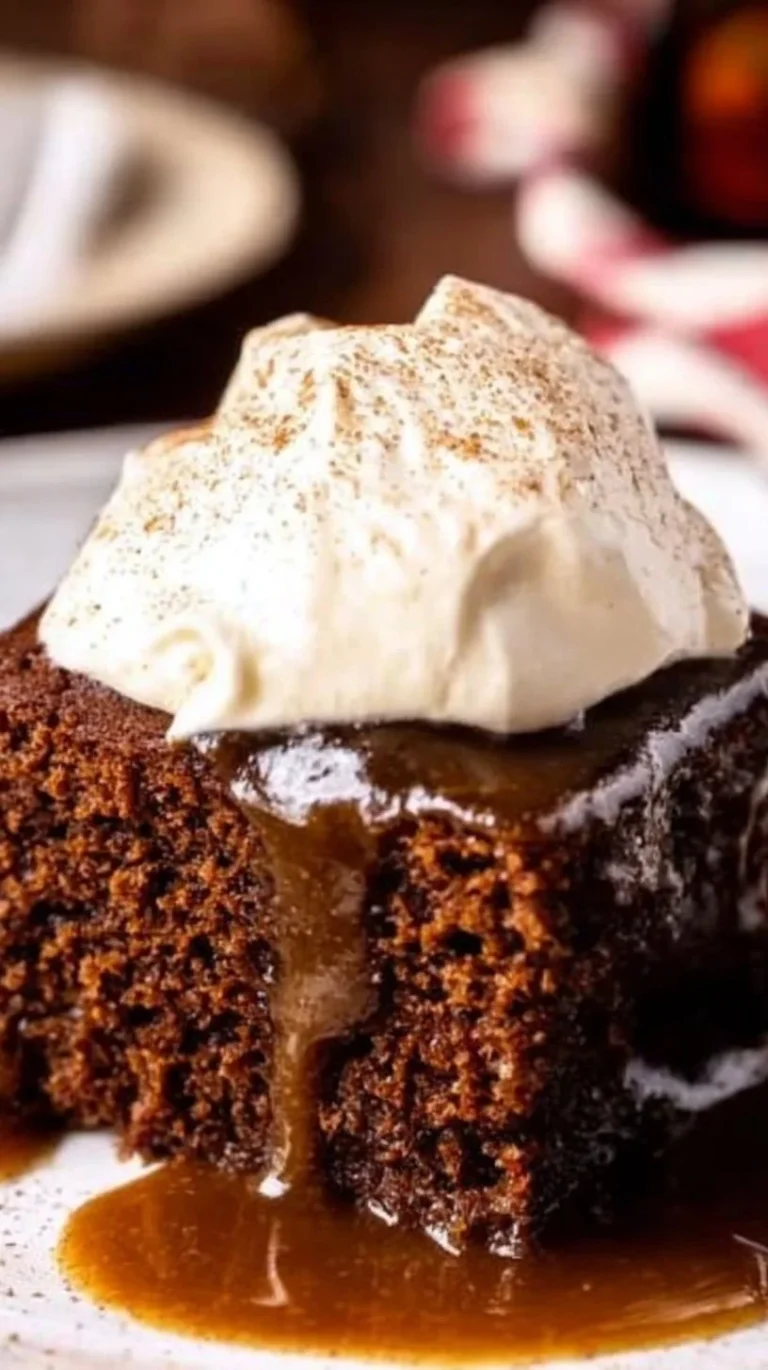Delicious Grandma’s Thanksgiving Stuffing Recipe
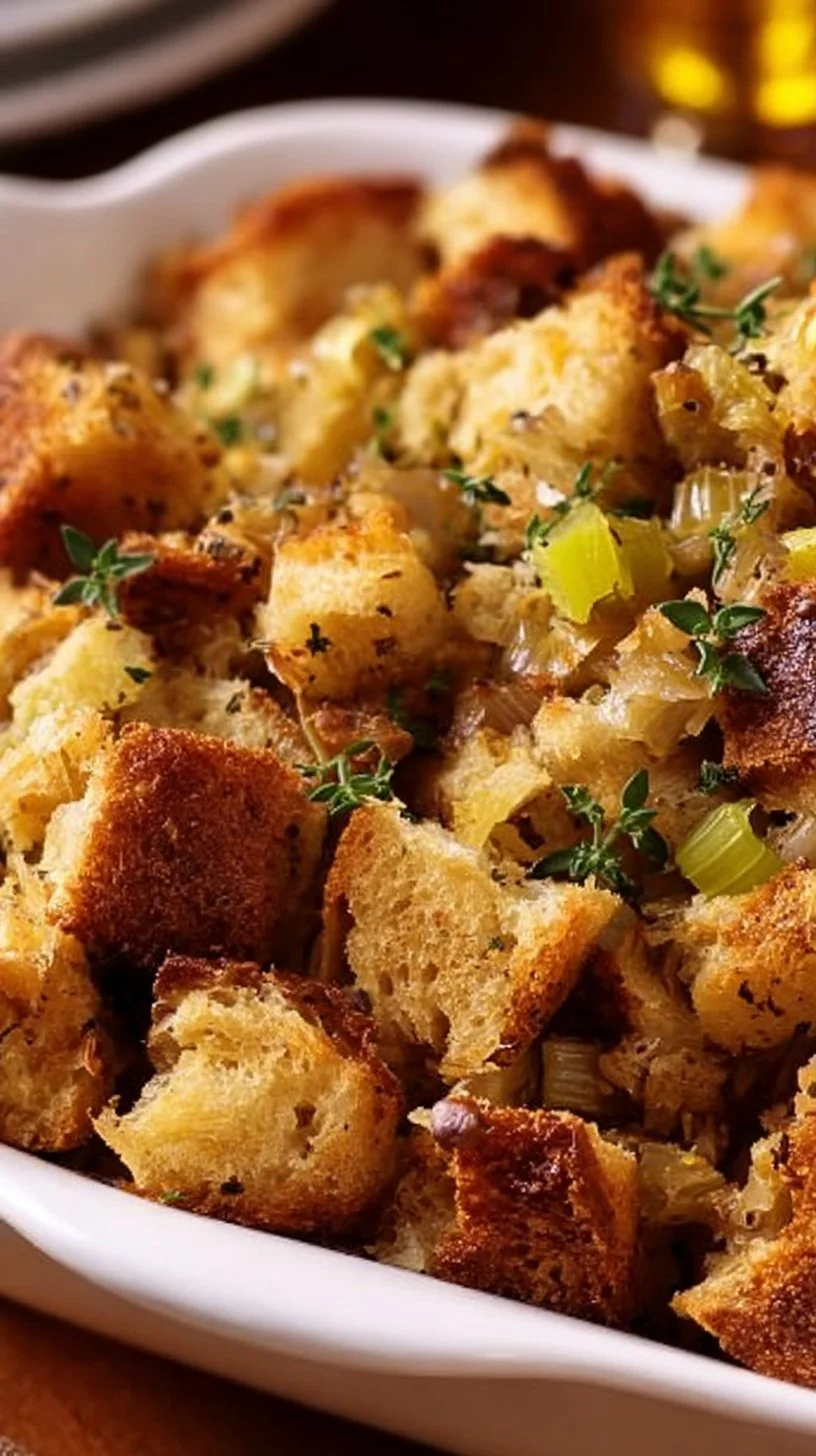
I grew up with this stuffing on every Thanksgiving — the warm scent of sage and butter that filled the house before the turkey even hit the oven. This is Grandma’s Thanksgiving stuffing: a simple, old-fashioned bread stuffing made with cubed sourdough or French bread, sautéed onion and celery, bright fresh herbs, and plenty of buttery broth. It’s comfort food that’s easy to pull together and perfect for holiday crowds or casual family dinners when you want something nostalgic and reliable. If you’re building a holiday menu, this recipe pairs beautifully with roasted turkey and simple sides — and if you need another crunchy, savory option, try these crispy air-fryer chicken wings for an appetizer or weeknight twist.
What makes this recipe special
This stuffing is classic in the best way: no fancy add-ins, just the right balance of buttery bread, aromatic herbs, and savory broth. It’s forgiving, scalable, and kind to budgets because stale bread becomes the star ingredient. The fresh sage and thyme give an unmistakable Thanksgiving flavor, while rosemary adds a piney lift that keeps each bite bright.
“This stuffing tastes like home — rich, herby, and perfectly moist without being soggy.” — a longtime family favorite
Why people make it: it’s a crowd-pleaser, easy to prepare ahead, and great for feeding a mix of picky and adventurous eaters. It also freezes and reheats well, making it a practical choice if your oven time is precious.
Step-by-step overview
- Cube bread and let it dry slightly so it soaks broth without turning to mush.
- Sauté onion and celery in butter until translucent and fragrant.
- Toss cooked vegetables with the bread and finely chopped fresh herbs.
- Add warmed low-sodium broth gradually until the mixture is moist but not soupy.
- Bake until the top is golden and edges are crisp, or stuff into a turkey cavity if preferred.
This short roadmap helps you know what to expect before you start: prep the bread, cook the aromatics, combine with herbs and broth, then bake.
Gather these items
- Bread (sourdough or French): 10 cups cubed — day-old or slightly dried works best. (Substitute: whole-wheat or gluten-free loaf; adjust liquid.)
- Onion: 1 large, finely diced.
- Celery: 2 cups, finely chopped (about 3–4 stalks).
- Fresh herbs: 2 tbsp sage, 2 tbsp thyme, 1 tbsp rosemary — all finely chopped.
- Low-sodium broth: 4 cups (chicken or vegetable). Use low-sodium to control seasoning.
- Unsalted butter: ½ cup (1 stick), melted. (Substitute: olive oil for dairy-free.)
- Salt and pepper: To taste.
Notes: If your bread is very fresh, spread cubes on a sheet and bake at 250°F (120°C) for 10–15 minutes to dry them slightly. Using fresh herbs brightens the flavor; if you must use dried, use about one-third the amount and check seasoning.
Step-by-step instructions

- Preheat your oven to 350°F (175°C). Butter a 9×13-inch baking dish or a comparable casserole pan.
- Cube 10 cups of bread into roughly 1-inch pieces. If bread is soft, toast cubes briefly to dry.
- Melt ½ cup (1 stick) unsalted butter in a large skillet over medium heat.
- Add the finely diced onion and chopped celery to the skillet. Sauté until softened and slightly golden, about 8–10 minutes. Season lightly with salt and pepper.
- Remove skillet from heat. Stir in the chopped sage, thyme, and rosemary so the residual heat releases their oils.
- Place the bread cubes in a large bowl. Pour the butter-vegetable-herb mixture over the bread and toss to coat evenly.
- Warm 4 cups of low-sodium broth in a saucepan or microwave. Add the broth to the bread mixture gradually, tossing gently. Stop when the bread is moist but not soggy — you should be able to squeeze a handful and have it hold together.
- Transfer the mixture to the prepared baking dish, pressing down lightly to compact.
- Bake uncovered for 30–40 minutes, until the top is golden and the center is set. If the edges brown too quickly, tent with foil.
- Let stand 10 minutes before serving to firm up.
If you prefer stuffing cooked inside the turkey, follow your bird’s safe internal temperature guidelines and cook stuffing until it reaches 165°F (74°C) in the center. (I personally bake in a dish for even texture and safer temperature control.)
Best ways to enjoy it
Serve this stuffing alongside roast turkey, gravy, and a tart cranberry sauce for a traditional holiday plate. For a more casual meal, pair it with roasted chicken or pork loin. Top individual servings with a spoonful of warm gravy, or crisp the surface under the broiler for a minute for added texture.
For complementary starters or sides, try a simple green salad, roasted root vegetables, or an easy shrimp appetizer like this air-fryer shrimp. Presentation tip: scoop into a shallow serving bowl and scatter a few extra fresh herb leaves on top for color.
Storage and reheating tips
- Refrigerator: Cool to room temperature, cover, and store in an airtight container for up to 4 days.
- Reheating: Place stuffing in an oven-safe dish, sprinkle a few tablespoons of broth over the top to refresh moisture, cover with foil, and reheat at 350°F (175°C) for 15–20 minutes until warmed through. For a crisp top, remove foil for the last 5 minutes.
- Freezing: Freeze cooled stuffing in an airtight, freezer-safe container for up to 3 months. Thaw overnight in the refrigerator before reheating.
Food safety note: If stuffing was cooked inside a turkey, refrigerate leftovers within 2 hours and consume within 3–4 days.
Pro chef tips
- Dry the bread slightly: Stale bread soaks up broth without collapsing. If your bread is fresh, cube and dry it in a low oven for 10–15 minutes.
- Herb timing: Add most herbs while sautéing to release oils, but reserve a little fresh chopped sage or thyme to fold in at the end for brightness.
- Broth control: Pour broth slowly. It’s easier to add more than to fix a soggy mess.
- Butter distribution: Melted butter evenly coats bread; for extra flavor, brown the butter lightly before adding the onions for a nutty note.
- Make ahead: Assemble the mixture (without baking), cover, refrigerate overnight, then bake the next day — perfect for freeing up oven time.
If you’d like a main-dish casserole with similar comforting flavors, consider my go-to angel chicken casserole for an easy family dinner idea.
Creative twists
- Sausage and apple: Brown 8 oz of sausage and add chopped apple for sweet-savory contrast.
- Mushroom-lover’s: Sauté 8 oz sliced mushrooms with onions for an earthy version.
- Cornbread stuffing: Swap half the bread for crumbled cornbread for a Southern profile.
- Vegetarian: Use vegetable broth and add toasted pecans or dried cranberries for texture and sweetness.
- Gluten-free: Use a gluten-free loaf and confirm your broth is GF.
- Herb variations: Swap rosemary for marjoram or add a pinch of sage-scented fennel for an Italian twist.
Common questions
Q: Can I prepare this ahead of time?
A: Yes. Assemble the stuffing (don’t bake), cover, and refrigerate up to 24 hours. Bring to room temperature while oven preheats, then bake 35–40 minutes. This frees oven space on the big day.
Q: How much broth should I use if my bread is very dry?
A: Start with 3 cups and add up to 4 cups as needed. Very dry bread soaks more, so go slowly until the mixture is moist but not soupy.
Q: Can I stuff the turkey with this recipe?
A: You can, but it requires careful temperature monitoring. The stuffing must reach 165°F (74°C) in the center for safety. For consistent texture and safer cooking, many cooks bake stuffing in a separate dish.
Q: How do I prevent soggy stuffing?
A: Use slightly dried bread, add broth gradually, and don’t over-compress the mixture in the baking dish. Baking uncovered allows excess moisture to escape and the top to crisp.
Q: Can I make this dairy-free?
A: Yes. Replace butter with an equal amount of olive oil or a dairy-free butter substitute.
Conclusion
If you want a time-tested, reliably delicious centerpiece side that tastes like holiday tradition, Grandma’s Thanksgiving stuffing delivers. For more inspiration on classic holiday stuffing ideas, check this recipe for Grandma’s Thanksgiving Turkey Stuffing | Tastes of Lizzy T. You can also compare techniques and variations at Grandma’s Thanksgiving Stuffing Recipe – The Carefree Kitchen.
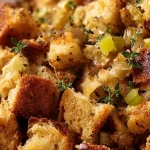
Thanksgiving Stuffing
Ingredients
Method
- Preheat your oven to 350°F (175°C). Butter a 9×13-inch baking dish or a comparable casserole pan.
- Cube 10 cups of bread into roughly 1-inch pieces. If bread is soft, toast cubes briefly to dry.
- Melt ½ cup (1 stick) of unsalted butter in a large skillet over medium heat.
- Add the finely diced onion and chopped celery to the skillet. Sauté until softened and slightly golden, about 8–10 minutes. Season lightly with salt and pepper.
- Remove the skillet from heat. Stir in the chopped sage, thyme, and rosemary so the residual heat releases their oils.
- Place the bread cubes in a large bowl. Pour the butter-vegetable-herb mixture over the bread and toss to coat evenly.
- Warm 4 cups of low-sodium broth in a saucepan or microwave. Add the broth to the bread mixture gradually, tossing gently. Stop when the bread is moist but not soggy.
- Transfer the mixture to the prepared baking dish, pressing down lightly to compact.
- Bake uncovered for 30–40 minutes, until the top is golden and the center is set. If the edges brown too quickly, tent with foil.
- Let stand for 10 minutes before serving to firm up.


